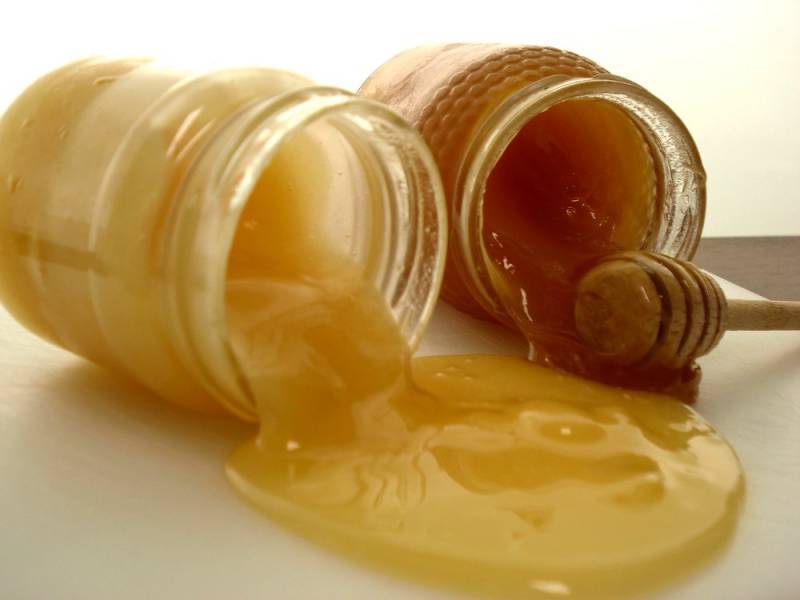Honey 101
Since ancient times, honey has served different purposes. It has been used as a sweetener, condiment and preservative. Honey has also been added to fish, beans, focaccia, fruit jam and syrups.
As a preservative, it has been used with apples, quinces and pears. The upper echelons of
society once raised their children on a mixture of milk and honey. And fermented honey was used to produce mead, a drink popular up through the Middle Ages. (Another popular drink was honeyed wine, made with the best vintages, like Falerno and Massico.) Honey has supplied us with everything from cosmetics (aromatic oils, perfumes) to medicine (as an antiseptic, cicatrizant and purgative).
Even artisans have exploited its properties: they have been known to soak precious stones in honey to heighten their shine, and fabrics to bring out their color. Over centuries, honey has remained a catchall product. It sweetens sour food—and not only the palates of rich; one Renaissance document mentions “peasants” who spread honey on leeks—and adds flavor to “country dishes,” like beans, red and white meat, and fruit preserves.
Honey vs. sugar
The sugar industry began to expand in 1800, and between 1850 and 1950 production increased 20 fold. In the first half of the 19th century, honey and sugar cost the same in England, which was the principal exporter of cane sugar at the time. Meanwhile in Northern Italy honey was cheaper than sugar as late as 1860.
But the demand for sugar grew, forcing manufacturers to find an alternative to cane sugar, which they did with the discovery of sugar beets. As manufacturers began mass-producing sugar, the honey industry mobilized and “modernized,” perfecting methods for producing an increasingly purer product. In fact, in the first half of the 1900s, people began to pay greater attention to the provenance of honeys, and what had long been chatter turned into a real commercial enterprise.
But it wasn’t until the 1970s that scientific research would be used to designate monofloral honeys, thanks to the first Melissopalynology studies, which identified and quantified how many pollen grains were left in a honey and could testify to each barrel’s provenance.
Honey—let me count the ways!
Honey was later classified by its place of origin, by how it was collected and treated, or by what it was to be used for. The main distinctions regarding its place of origin are honeys obtained by the flower’s nectar, which can be distinguished by monofloral honey (i.e., honey collected by bees from a single botanical species) and multifloral honey, which comes from different botanical species.
There is also the more flavorful honeydew honey produced by bees that transform a sugary substance made from the excretions of an insect called Hemiptera. Honeydew honey is known for its absence or near absence of crystallization due to its high percentage of fructose.
Classifications based on how the honey is treated include, first and foremost, honeycomb honey, which is obtained when an apiculturist does not separate honey from a loom (that explains why it also contains wax). Honeycomb honey is the easiest kind of honey to collect. There is also filtered honey, which has been separated from the wax using filters, and honey obtained by spinning or pressing looms.
Types of honey based on their use include table honey, made for direct consumption as a natural sweetener in drinks or for cooking, and industrial honey. The freshness and storage time of industrial honey is measured by its level of HMF (hydroxymethylfurfural).
Royal Jelly
A particularly nutritious and healthy kind of honey, royal jelly is secreted from worker bees’ hypopharyngeal glands and used by bees to feed larvae (for up to three days) and the queen bee (for her entire life). That is why it is considered a “noble” source of nutrition. In the field of apiculture, it is regarded as one of the most highly esteemed products.
Propolis, or Bee glue
This substance is obtained by collecting various bees on the bud and cortex of different species of plants, including poplars, spruce pines, spruce firs, pines, plum trees, oaks, elms, willows, horse chestnuts and ash trees, among others. It contains aromatic essences, essential oils like terpenes and various other elements. Propolis is a popular substance used to make alternative medicine, candy and alcohol solutions to treat soar throats and oral infections.


































i-Italy
Facebook
Google+
This work may not be reproduced, in whole or in part, without prior written permission.
Questo lavoro non può essere riprodotto, in tutto o in parte, senza permesso scritto.